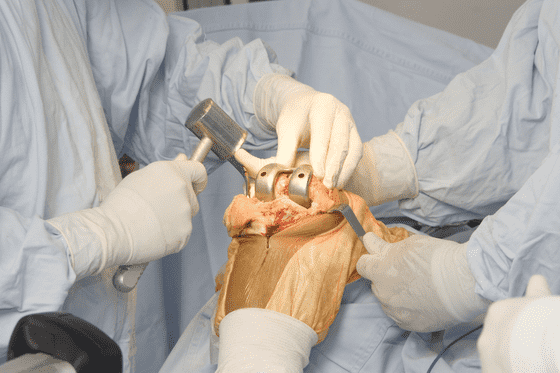Indicators on Axis Spine And Orthopedics You Should Know
Indicators on Axis Spine And Orthopedics You Should Know
Blog Article
All About Axis Spine And Orthopedics
Table of ContentsAll About Axis Spine And OrthopedicsAxis Spine And Orthopedics Things To Know Before You BuyLittle Known Questions About Axis Spine And Orthopedics.Getting The Axis Spine And Orthopedics To Work
An orthopedic cosmetic surgeon is a physician who specializes in treating troubles of the bones, joints, and connective tissues, and guaranteeing you maintain a healthy and balanced musculoskeletal system., we have actually highly certified orthopedic cosmetic surgeons that are qualified of treating people of all ages. I got involved in research study during my initial year of medical institution, and I started making links with orthopedic specialists early on.
Talk about the post-operative care strategy with your specialist. Organize for transport to and from the medical facility on the day of surgical treatment.
The Ultimate Guide To Axis Spine And Orthopedics

Your doctor will certainly give plenty of info pertaining to post-operative care, including exactly how to remain clean and keep the medical location tidy. Complying with these pointers can prepare you physically and mentally for your orthopedic surgical treatment. Bear in mind to maintain a positive outlook and depend on your clinical group's proficiency, contributing to a smoother healing procedure.

Nobody anticipates you to know anything, so do not try to memorize a lot of arbitrary truths. Otherwise, joint discomfort can truly mess up your life.
Common conditions treated by orthopedic cosmetic surgeons are: Cracks and Bone Trauma: Broken bones and various other injuries from crashes or influences. Bone Cancer Cells: Tumors in the bones. Orthopedic Injury: Severe injuries impacting bones, joints, or soft cells.
Sprains and Stress: Injuries to tendons and muscles. Tendinitis: Inflammation of the ligaments. Orthopedic specialists do a range of procedures to aid individuals with musculoskeletal problems. Common examples are knee and hip substitutes. Joint Repair: Rebuilding a damaged joint to restore its feature. Bone Grafting: Taking bone from one component of the body and transplanting it to one more area to fix and reconstruct harmed bones. Reconnecting Nerves: Fixing damaged nerves to bring back movement and sensation. Spine Disk Substitute: Replacing a harmed back disk with an artificial one to soothe discomfort and recover function. You'll need to take and pass the Medical College Admission Test( MCAT). This standard test evaluates your knowledge and skills needed for success in clinical college. Medical college is an intense

The Ultimate Guide To Axis Spine And Orthopedics
Next, they complete an orthopedic residency. It's generally 5 years useful source and offers hands-on learning in a medical setup. Visits frequently consist of: Discussing your signs, clinical history and way of living.
Treatment suggestions. Some conditions need added imaging, like a CT scan or MRI for even more in-depth views of the unpleasant location. Your orthopedist will suggest therapies to minimize signs and symptoms up until you receive a medical diagnosis. Orthopedic surgeons concentrate on nonsurgical and surgical strategies. For sure kinds of orthopedic injury or genetic conditions, surgical treatment is usually the first line of treatment. For a lot of various other conditions, orthopedists try nonsurgical therapiesfirst. It might take greater than one type of therapy to accomplish long-term relief. Selecting the right is crucial for successful medical end results and improved client recuperation. With a broad variety of options available out there, it can be frustrating for both doctors and people to make an educated choice. The leading 5 variables to think about when picking an orthopedic dental implant are medical compatibility, cost-effectiveness, considerations for modification surgical treatment, patient-specific aspects, and the layout and innovation of the implant. They are available in different forms, dimensions, and products, each offering a specific purpose based upon the patient's demands. Comprehending the essentials of orthopedic implants is essential before diving into the decision-making procedure. One of the leading factors to consider when picking an orthopedic implant is its compatibility with the procedure. Various implants are designed for numerous surgical techniques and strategies. The orthopedic implant ought to be especially made to fit the patient's composition and make certain stability throughout the healing process. Surgical compatibility entails aspects such as implant dimension, shape, and product. The success of orthopedic treatments relies greatly on the appropriate selection and positioning of implants that are compatible with the patient's makeup and case history. By focusing on individual security and well-being, orthopedic doctors can attain effective outcomes and provide the best of treatment to their patients. Cosmetic surgeons have to thoroughly think about the biomechanical residential properties of the implant and just how it will certainly integrate with the person's bone structure. This will certainly contribute to much better medical outcomes, lowered problems, and much shorter recovery time. When selecting implants for a patient, it is vital to consider a selection of patient-specific factors that can affect the success and outcome of the treatment. These variables encompass the individual's age, bone quality and quantity, dental health condition, medical background, way of living practices, and visual preferences. For older people with jeopardized bone thickness, shorter implants or grafting treatments might be useful to provide the needed security and assistance. 3. Is the size of the orthopedic dental implant a vital consideration? Exactly how does it affect the medical procedure and the person's recovery? Yes, the size of the implant is important as it has to match the person's framework for proper fit and functionality. 4. Can the client's age and lifestyle play a function in selecting one of the most appropriate orthopedic dental implant? Definitely. Exactly how does the price of an orthopedic dental implant variable into the decision-making process, and are there ways to balance high quality with cost? The expense of the implant is a crucial consideration, however it must not be the single determining aspect. Stabilizing high quality with affordability involves considering different implant alternatives 'lasting advantages and prospective problems. Report this page